Table of Contents
Online giving has seen a consistent year on year growth since 2012. In 2019 alone, almost all nonprofits witnessed a massive change in online revenue, as seen below:
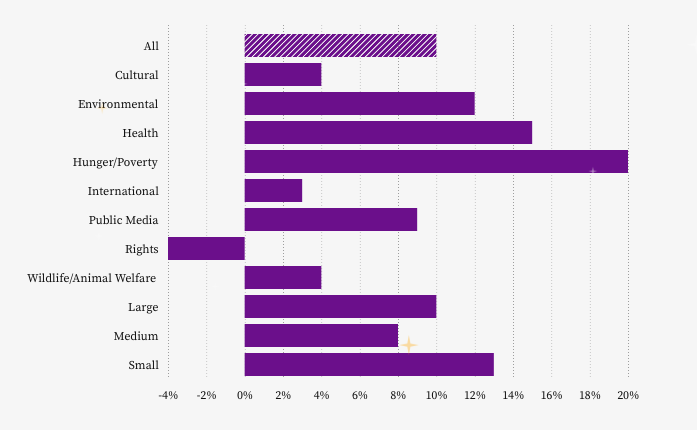
With your competition getting tougher by the minute, you have to up your virtual fundraising game. The traditional way that everyone follows is not going to get you very far. Consider Bitcoin’s story.
Multiple companies boasted the same claims of replacing traditional transactions and currency with Bitcoin. But none of them focused on innovating and trying a different approach for it. The result? The competition scattered the market and we don’t hear from any of them today.
The online behavior of donors is changing., You cannot stick to the same playbook anymore.
For instance, most nonprofits continue to focus on 1-1 donor appeals without considering the impact of social media. With social media, you have the opportunity to create a network that lets your organization connect with a large number of your supporters rather than just a few at a time.
It’s critical for nonprofits to adapt to this shift in online behavior if they wish to keep going. Here are a few online fundraising tips to get you started.
1. Diversify your digital ad spend
Digital ads are the most effective way to reach out to prospects and get them to take action. Although the initial costs may seem high, the return on investment is unparalleled. For instance, organizations make an average of $2 in revenue for every $1 they spend on Google Ads.
Owing to this, nonprofits are allotting significant budgets towards them with spending increasing by 17% in 2019

However, while larger nonprofits spread their budget across display ads (35%) and social media ads (54%), smaller nonprofits spent 96% of their dollars on social media.
Online fundraising tip #1:Have a multichannel approach and diversify ad spend across search, display, and social media.
It’s true that social media provides you with better demographic targeting options. However, you cannot ignore the impact other types of ads can have. This will be more clear with the return on ad spend (ROAS) metrics below:
- Return on ad spend for search ads – $3.59
- Return on ad spend for display ads – $0.74
- Return on ad spend for social media ads – $0.70
- Return on ad spend for video ads – $0.53
Initially, it may seem daunting for smaller organizations to implement this online fundraising tip. Moving away from a platform you are comfortable with is not easy. But, in the end, it’s all about getting donors and you never know where you might find more of them if you restrict yourself to one platform.
Major concerns you may have
1. With search ads, there are very limited keywords that can be targeted. Plus, there would be a lot of competition for those keywords to see actual benefits.
These are valid concerns and would haunt any organization, especially those that don’t have a lot of budget for ads. However, there are two simple ways you can overcome this issue.
Firstly, split your budget between ad channels. Start with a 70-30% split. This would be enough to experiment with other channels while maintaining the results from a tried and tested channel.
Secondly, apart from the major keywords, target long-tail keywords to reach niche audiences.
For example, if you’re working for animal welfare, and target the keyword “Donate for animal welfare”, you’ll be competing with big organizations like The Humane Society or ASPCA:
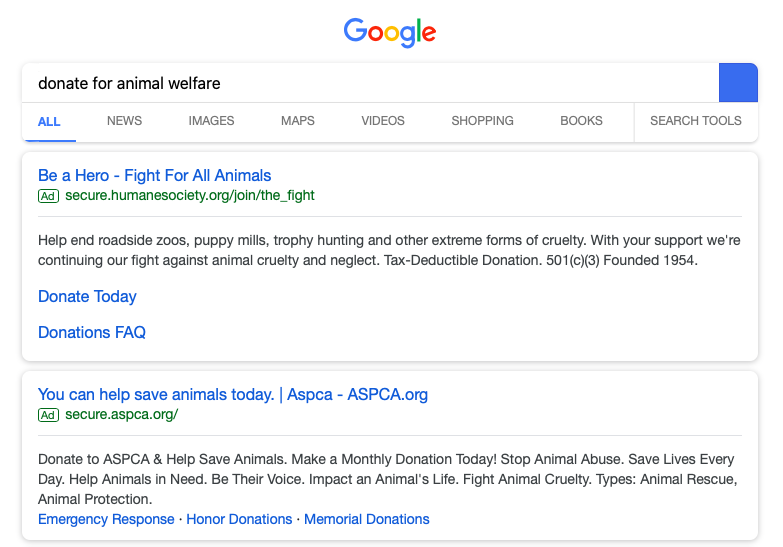
But by targeting a more niche longtail keyword like, “Donate for animal welfare in NYC”, you can stand out:
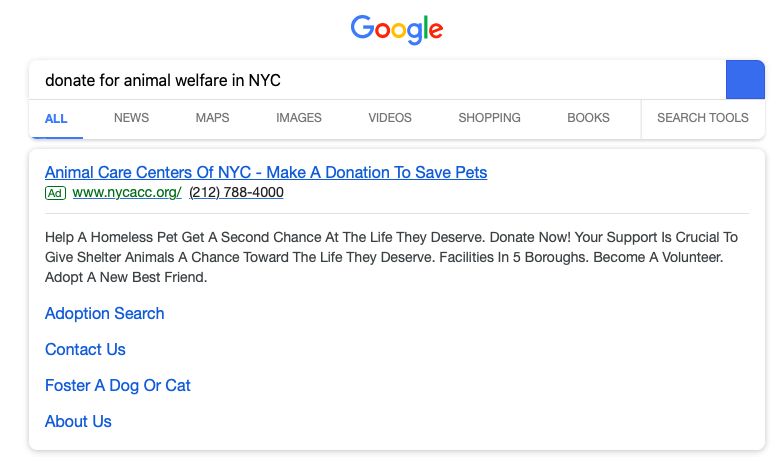
2. Push for Peer to Peer Fundraisers through Facebook
Peer to peer fundraising has a higher credibility factor that makes it the most effective form of fundraising. Quite obviously, you would be more open to fulfilling a donation request from a close friend than an organization right?
However, over 45% of nonprofits don’t engage in or don’t have the resources for peer to peer fundraising. This is after the fact that a majority of organizations generate over 50% of their funds through P2P fundraisers.
Not just that, over 1/3rd of all online donations are made through P2P, with the majority of it coming from social channels.
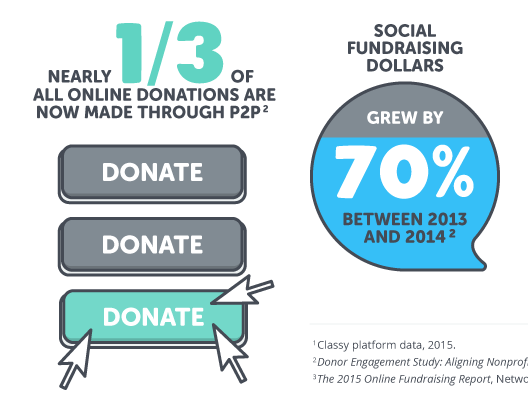
Online fundraising tip #2:Leverage Facebook to push your social peer to peer fundraising efforts.
In 2019, 97% of nonprofit revenue from Facebook was through P2P fundraiser tools. There are three key reasons why Facebook is the social channel with the most potential for P2P fundraisers:
- Facebook still trumps over all channels in terms of the number of users. This translates to a higher reach for anyone on Facebook.
- Facebook’s fundraising features are more intuitive: donors can make payments without leaving the platform and individual fundraiser posts receive higher priority in a user’s newsfeed.
- Facebook’s fundraising tools make it easy to integrate with most P2P tools on the market.
Here’s an example of a fundraiser set up by a loyal donor on Facebook:
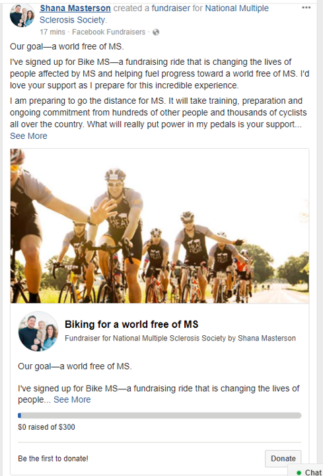
The fundraiser post is accompanied by a personal message written by the organizer that adds a personal touch while the fund thermometer keeps up the momentum.
Major concerns you may have
1. When fundraising on Facebook, there is no way to collect valuable donor data which could reduce the effectiveness of this online fundraising tip.
This was a concern of the past. Most P2P fundraising tools that integrate with Facebook Fundraisers can actually fetch the donor data you need. For instance, the integration between Classy, a fundraising tool, and Facebook allows organizers to auto-create Facebook fundraisers. Apart from synching fundraising progress, the tool also collects the donor’s full name, donation amount, and email for your donor list.
2. With peer to peer fundraising, there may be an issue of people not putting in too much effort to meet their goals. The campaign would be only as good as their passion.
It is true that some organizers may lose the drive to reach their fundraising goals which may complicate executing this online fundraising tip. However, the right tool can help you out here too. Tools like Funraise gamify P2P fundraising with a leaderboard. A little healthy competition goes a long way in keeping them motivated.
Here’s an example of how Green Dot Public School made P2P fundraising competitive:
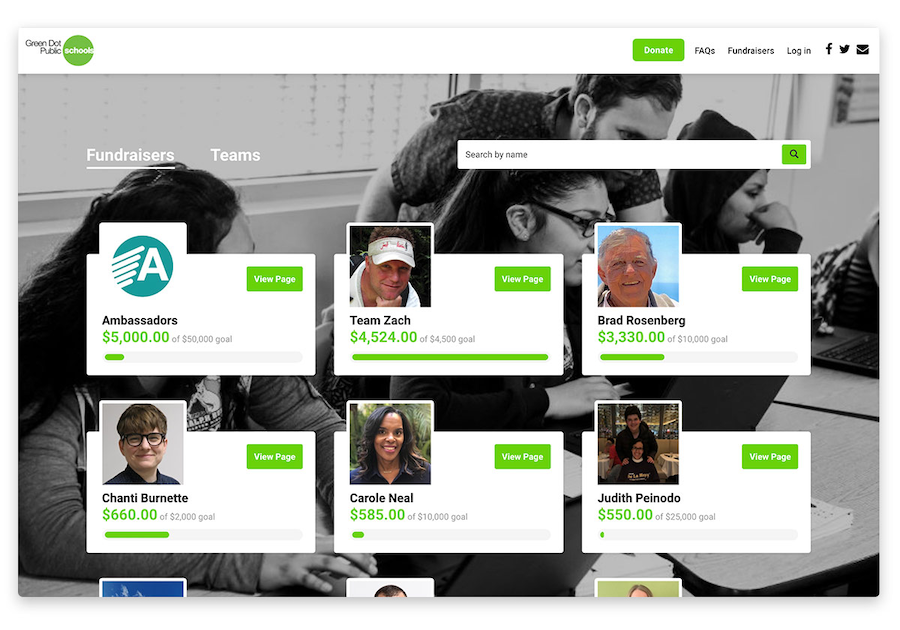
3. Grow your in-house social presence
There’s no doubt that a strong social presence is critical for any nonprofit. Apart from ads, these platforms allow you to tell your story and spread the word, engage supporters, and drive traffic to your website.

However, while everyone is focused on strengthening the brand’s social presence, they overlook the social identities of the people that make up the brand.
Online fundraising tip #3:Grow the social presence of your supporters, staff, and volunteers, encouraging them to take responsibility for the cause.
Organizations can sometimes ignore the potential of a strong social presence for their staffers or supporters.
When your volunteers and supporters post something related to your cause the trickle effect of that directly leads back to greater visibility and branding for your nonprofit. The personalized and genuine posts help form a community around like-minded individuals who can be rallied to take action for your cause.
There are two major reasons you should consider this strategy:
- Firstly, people are more strongly influenced to give (or take any other action) if the request comes from a friend/family member. Think about it, would you rather sign a petition requested by a stranger or a friend?
Even if the cause may be the same, with the friend, there is a familiarity factor in play that adds to the credibility of the request.
- Secondly, social media algorithms are focused on making a user’s experience better, not a business’s. Therefore, most algorithms prioritize posts from friends rather than business pages.
A great example of this in play is the Pete for America campaign in which campaign staffers started building their audience in their own niches.
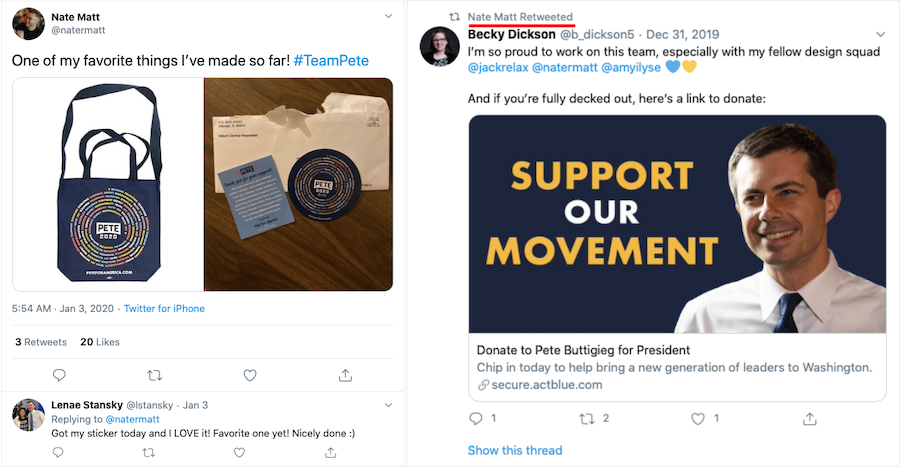
They pushed their own products, shared their views, and gathered audiences on different social channels. Ultimately, they were able to harness this audience to raise money for the campaign.
The online engagement director for the campaign explains this strategy in a nutshell:
If you can create a bigger digital ecosystem that isn’t just the candidate* but the stars (staffers) around it, we put more points of contact and the candidate* doesn’t have to wear the full weight of supporting the online campaign.
–Stefan Smith, Online Engagement Director, Pete for America
Note: *In your case, it’s the nonprofit (not the candidate)
Major concerns you may have
1. Individuals would mostly put up personal posts and post about the organization less frequently. Wouldn’t that affect the experience we are trying to provide as a brand?
No, it doesn’t. In fact, it reinforces the trust in the message (related to your organization) that the staffer/volunteer puts up, which is what makes this online fundraising tip so great.
Think about it, one of your friends just keeps posting about how great his/her company is. Another puts up normal posts/pictures from their life and sometimes writes about what he/she is doing at work and helping people out. At one point, you might turn a blind eye to the posts of the former. But, the message from the latter would make you stop to think.
2. The posts, messages might not be branded. Plus, the nonprofit may not have complete control over what is being posted. Wouldn’t that be an issue?
Again, no. The personalization that comes with an individual posting in their voice is what adds to the benefits. It allows you to tap into multiple segments of audiences. A lot of them may not resonate with your brand’s voice but might with an individual. This allows the staffer/volunteer to build a personal community of like-minded people around them which, in turn, can be harnessed by your brand using the staffer as a point of contact.
4. P2P texting to strengthen donor relations
Texting is personalized, free of spam, and has a higher open and read rate than any other channel. Its role as a personal channel of communication is more important now during the shift to virtual.
Last year, nonprofit text messaging audiences grew by 26%, when Facebook audiences grew by just 4% and email list sizes declined by 2%,
Moreover, as per surveys, more people prefer receiving texts rather than emails or calls for updates.

While the average CTR of fundraising texts is as high as 4.2%, nonprofits have not yet scratched the surface of the results they can achieve.
Online fundraising tip #4: Prioritize peer to peer texting over SMS broadcasts to communicate with donors and make asks.
While it’s not technically an online fundraising tip, it’s crucial in terms of supporting digital fundraising and engagement efforts.
Peer to peer texting adds a personalized human touch to text communications. It’s these personal connections that present new opportunities for recruiting, organizing, and mobilizing nonprofit supporters.
Imagine receiving a text about a volunteering opportunity. You are highly interested in it but you need to know if you can join a little later or not. If the message was an automated broadcast, prospective volunteers won’t be able to respond and get an answer. But if it was a peer to peer text, they could reply to the text and get a clear response from a volunteer or staffer.
This will be more clear with the data below:
- In 2019, nonprofit peer to peer texts saw a response rate of 14%. The response rate doesn’t necessarily indicate action but a crucial stepping stone towards it.
- 3 out of 4 people get frustrated when they can’t respond or take action after receiving an automated text message. This translates to annoying 75% of the people you are sending automated texts to.
Peer to peer texts allows you to apply a conversational marketing approach for communications. This approach leads to a strengthened connection between the supporter and the cause that creates more opportunities for action.
Remember that not all your messages have to be p2p texts. You can still send automated texts for general updates and information.

Major Concerns you may have
1. Doesn’t peer to peer texting require more volunteers to send messages and reply to them if you get responses?
If you’re using the right texting solution, a volunteer can prepare a personalized template and send up to 3600 texts in an hour. Moreover, they can even have templates for common questions ready to be sent as soon as someone raises them.
2. How would a person know that the text has been sent by another person?
It’s just a matter of introducing yourself as a person at the beginning of a text. In the end, you can also prompt people to get back on the same thread for any queries.
It might not be clear in the beginning to some, but as you continue sending texts from the same number and more people respond to it, it will be better. Also, a few supporters may even conduct during tests just to be sure, like in the example below:
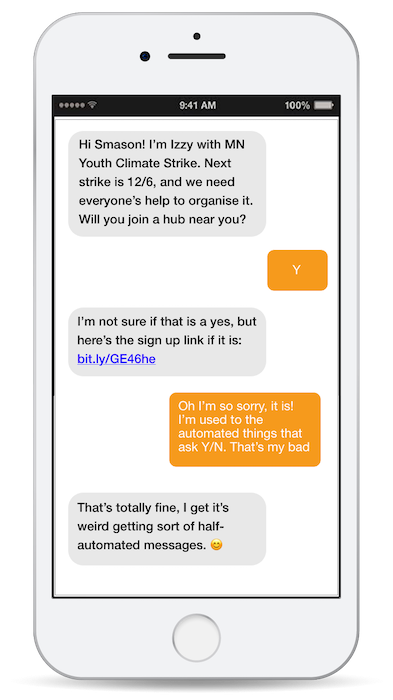
Final thoughts
Fundraising and connecting with donors virtually can be a tricky shift, especially if you were heavily reliant on in-person meets and events. However, that may not be an option anymore.
As I mentioned earlier, online giving is not going to stop anytime soon. In fact, it’s probably going to take over traditional donation methods (like cash or wire transfers) in the next few years, given how frictionless the process is becoming.
Over 54% of prospects already prefer giving online, which makes it essential for you to meet them on their terms. Better to get on the bandwagon before it’s too late.
Do you have any more innovative tips in mind? Do share it with us in the comments below and we’ll be sure to add them too.

